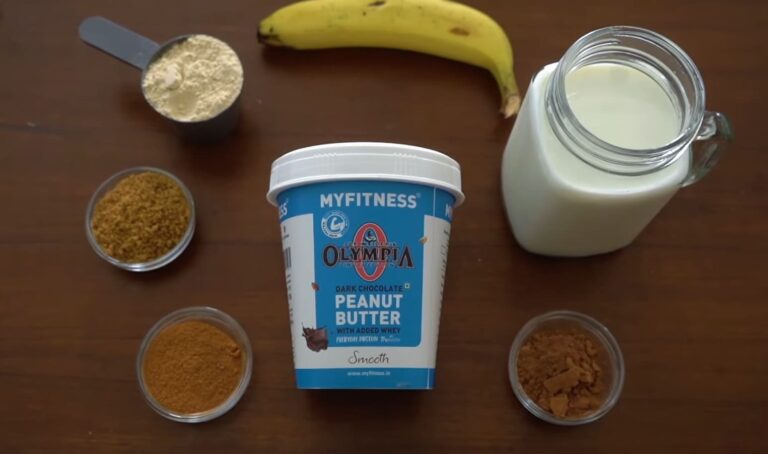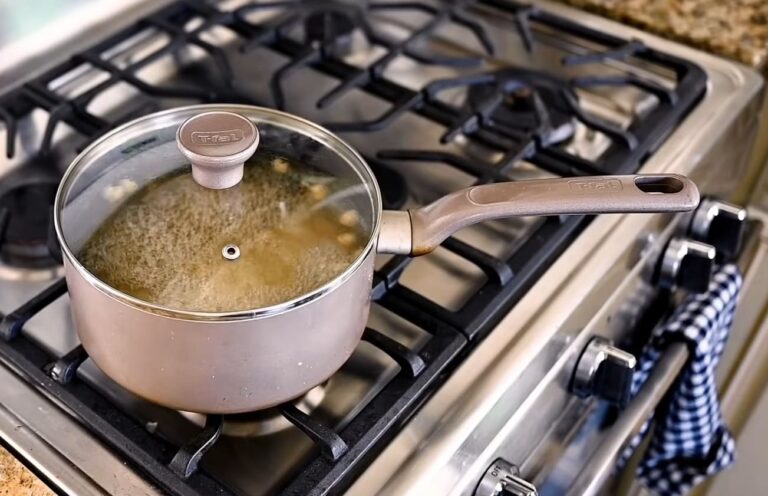Are Ninja Blenders Dishwasher Safe?
Smoothies, soups, and sauces in seconds – that’s what Ninja blenders promise. With their powerful motors and sharp blades, Ninja blenders can pulverize fruits, vegetables, ice, and more into delicious creations. But what about after blending? Can you pop your Ninja blender pitcher in the dishwasher like a regular cup or bowl? This is an important question for any busy blender user. The convenience of being able to rinse and load the pitcher is a major perk. In this article, we will explore the dishwasher dilemma – can Ninja blenders handle the heat, detergent, and turbulence of a dishwasher cycle? Or are handwashing and caution required? Let’s examine the facts and evidence around cleaning these popular blenders. The answer may surprise you!
Which Ninja Models Are Dishwasher Safe?
When considering whether your Ninja blender can go in the dishwasher, the most important factor is identifying which Ninja blender model you own. Ninja manufactures a wide range of blenders and food processors; not all are created equal regarding being dishwasher-safe. Certain materials used in blender pitchers, lids, and blades can become damaged by high heat and harsh detergents. Looking for the model name on the bottom of your Ninja device is crucial.

Ninja’s lower-end blenders like the Ninja Personal Blender, Ninja Fit, and Master Prep lines are generally marked “top rack dishwasher safe.” This means the cups and lids can handle being cleaned on the upper rack of a dishwasher, though handwashing the blades is still recommended.
Models, including the Ninja Professional, Ninja Mega Kitchen System, and Ninja Foodi blenders, have dishwasher-safe pitcher lids and cups or bowls. However, for these models, the blender pitchers are NOT dishwasher safe. The intense blending these pitchers undergo causes them to degrade in extreme heat and detergent slowly. Sticking to handwashing for the pitchers is highly advised.
Ninja’s higher-end models, like the Ninja Smart Screen and Ninja
Professional Plus lines take dishwasher safety a step further. These blenders are designed with pitchers, lids, cups, and bowls, all marked as dishwasher safe. The durability is built into the materials used in these models. However, you’ll still want to handwash and air dry the blades separately.
No matter what Ninja blender you own, it’s always smart to double-check the user manual or product website before assuming all parts are dishwasher safe. Ninja provides details on cleaning guidance for each blender model. When in doubt, handwashing with a soft sponge and mild detergent is gentlest on your blender components. Going the extra mile to hand dry parts helps avoid cracks from heat damage over time.
So check your Ninja blender model, consult the product details, and review any care instructions. Understanding your particular blender’s dishwasher capabilities will maximize its lifespan!
Which Components of a Ninja Blender Are Dishwasher Safe?
When it comes to cleaning your Ninja blender, knowing which specific parts can handle the dishwasher is key. The high heat, harsh detergents, and intense spray pressure inside a dishwasher can damage certain blender components over time. Reviewing which pieces are durable enough for the dishwasher versus which need gentler handwashing is important.
Pitchers
The large plastic pitchers used for blending are often marked “top-rack dishwasher safe” for basic Ninja models. However, for powerful models like the Ninja Professional, pitchers should be hand washed to preserve the material from breaking down. Refer to your owner’s manual.
Cups
The small plastic cups used for smoothies and personal blending are frequently dishwasher safe, even on lower racks. Always check the markings on your model’s cups to confirm. The durable plastic holds up well.
Lids
Plastic lids are generally durable enough for the dishwasher’s top rack. The heat and spray typically don’t affect these simple lids. Just be cautious of any rubber gaskets degrading over many dishwashing cycles.
Blades
Never put removable blender blades or blade assemblies in the dishwasher! The metal and sharp edges will dull much faster under extreme heat and pressure. Always handwash blades gently yet thoroughly.
Gaskets
Silicone or rubber gaskets provide leakproof blending. But the high heat of dishwashers can cause premature cracking or warping. Handwashing gaskets is recommended. If you do use the dishwasher, choose the top rack.

Bottom Line
While many components may be labeled dishwasher safe, handwashing remains the most gentle cleaning method for your Ninja blender. Take extra care with blades, pitchers, and gaskets. When uncertain, check your owner’s manual or Ninja’s website for specific model guidelines. Prioritizing your blender’s longevity requires understanding which components can withstand the dishwasher’s intense effects.
How to Clean a Ninja Blender in the Dishwasher?
Cleaning your Ninja blender in the dishwasher can be quick and convenient – as long as you follow the proper procedure. Taking the right steps will allow for thorough cleaning while avoiding any damage to your blender. Follow these key guidelines for safe dishwashing your Ninja blender components:
Unplug First
Before any cleaning, always unplug the Ninja blender base from the electrical outlet. This prevents any risk of shock or base damage from accidental motor startup while handling wet parts.
Remove Lid and Blades
Detach the lid from the pitcher or cup and set aside. Carefully unscrew the blade assembly from the pitcher/cup and set it in a secure place. Removing the blades allows for better cleaning coverage.
Load Dishwasher-Safe Parts
Verify which components are dishwasher-safe for your specific Ninja model. Often the pitcher, cups, and lids can handle the dishwasher, while the blades and base require handwashing.
Use the Top Rack for Lids and Blades
The dishwasher’s top rack provides the ideal gentle cleaning for lids and blades. The lower rack’s direct spray is too intense. For pitchers, the bottom rack is fine.
Never Wash the Base in the Dishwasher
Only the removable blender components are dishwasher safe. The base contains electrical components that can short out and become damaged.
Always handwash the base with a damp cloth.
Avoid Heated Dry Cycle
Ninja blender parts are fragile. Let items air dry naturally after dishwashing to prevent any heat damage from the drying cycle.
By unplugging, disassembling parts, loading the dishwasher properly, avoiding the base, and air drying – you can safely and effectively clean your Ninja blender in the dishwasher. Always defer to the owner’s manual for your exact model’s guidelines too!

Can a Ninja Blender’s Blades Corrode in the Dishwasher?
The removable blades of a Ninja blender are the most important component. These sharp, spinning blades are what pulverize ingredients into perfectly smooth textures. But can putting the Ninja blender blades in the dishwasher lead to corrosion and damage over time? This is an important question for anyone wanting to care for their blender and extend its lifespan properly.
What Causes Corrosion on Metal?
Corrosion, also known as oxidization, occurs when oxygen reacts with certain metals. When metal blender blades are exposed to oxygen, moisture, acids, salt, and other reactive substances, corrosion can take place. This leads to pitting, tarnishing, and rusting of the metal surface.
Stainless Steel Construction
Ninja blender blades are typically made from stainless steel due to their durability and corrosion resistance. However, stainless steel is still vulnerable to corrosion, given the right conditions. Dishwashers create a prime environment for corrosion on metal with their hot, humid, and harshly acidic interior.
Factors Leading to Corrosion
Several specific factors make corrosion more likely on stainless steel blender blades in the dishwasher:
- Heat – Dishwashers reach temperatures up to 150°F or higher, which accelerates corrosive chemical reactions.
- Steam – The moist, steamy environment leads to condensation, which enables corrosion.
- Detergents – Dishwasher detergents are highly alkaline and full of chlorides which break down protective surfaces on metal.
- Salt – The presence of salt from water softeners or salt-based detergents advances pitting.
- Water Impurities – Minerals in tap water provide electrolytes that facilitate corrosion reactions.
- Agitation – The turbulent wash cycles strip away any protective coating on the metal.
Signs of Corrosion
How can you tell if your Ninja blender blades are starting to corrode from the dishwasher? Some clear signs include:
- Rust-colored spots or pits appear on the blade surface
- Cloudy, etched patches on the metal
- Pitting and roughness developing on cutting edges
- Blades feeling gritty or sandy
- Visible wearing down of metal over time
Preventing Corrosion
The good news is that corrosion can be prevented by avoiding the dishwasher and using proper handwashing techniques:
- Hand wash blades only using a non-abrasive sponge and mild detergent. Avoid steel wool scouring pads.
- Rinse thoroughly to eliminate all soap residue that can interact with metal.
- Dry immediately with a soft towel to limit oxygen exposure time.
- Lubricate blades occasionally with food-safe oil to maintain a protective barrier.
- Store covered in a dry location away from moisture, salt, and acids.
By keeping Ninja blender blades away from the dishwasher, corrosion, and premature dulling can be stopped in their tracks. With careful handwashing and storage, your blender blades can maintain their sharp precision for many years.
Alternative Ways to Clean a Ninja
While the convenience of cleaning Ninja blender components in the dishwasher is tempting, handwashing can be a safer and more thorough cleaning method. By taking a few simple steps, you can effectively wash your Ninja blender parts by hand. This preserves your blender and optimizes its performance.

Fill the Pitcher with Warm Water
Start by filling the Ninja blender pitcher halfway with warm water from the tap. The warm water helps dissolve and loosen any sticky or oily residue from blended ingredients. Filling halfway allows room for suds and agitation.
Add a Drop of Mild Detergent
Only a small amount of dish detergent is needed since blenders already require less grime removal than dishes. A couple of drops of a gentle, eco-friendly soap will suffice to make a washing solution. Avoid harsh chemical cleaners.
Blend Soapy Water
Secure the lid and blade assembly back onto the pitcher. With the blender unplugged, pulse a few times to dislodge particles and distribute suds. The blades will churn the soapy water to cover all interior surfaces.
Disassemble and Scrub Components
Detach the lid and blades once again to access all sides. Use a non-abrasive sponge or soft cloth to scrub the remaining debris off each part gently. Be extra delicate around blade edges to avoid dulling.
Rinse Thoroughly
Rinsing fully with room temperature water is crucial to eliminate all soap residue and prevent buildup. Soap left behind can breed bacteria or react with blade metal. Rinse every crevice near gaskets, under blades, etc.
With this thorough handwashing routine, your Ninja blender will get spotless with no dishwasher damage. The small amount of extra effort pays off in blender longevity and performance. Soon handwashing will become a breeze!
FAQs
Is it okay to put the removable blades from a Ninja blender in the dishwasher?
No, you should never put the removable blade assemblies or individual blades in the dishwasher. The heat and detergent can damage and dull the sharp edges over time. Always handwash blades carefully with mild soap and dry thoroughly.
Will putting plastic components like cups and lids from a Ninja blender on the bottom dishwasher rack cause warping?
Yes, only place plastic components like cups, lids, and rubber gaskets on the top rack of your dishwasher if they are dishwasher safe. The bottom rack’s direct heat and spray pressure can warp and crack the plastic over time.
How can I prevent corrosion on the metal blades of my Ninja blender if I handwash them?
Rinse blades very thoroughly after washing to remove all soap residue. Always immediately dry blades with a towel instead of air drying. You can also apply a small amount of food-safe oil to blades after washing to maintain a protective coating.
If my Ninja blender pitcher is not dishwasher safe, what’s the best way to clean it by hand?
Fill the pitcher halfway with warm water and a drop of mild detergent. Pulse for 30 seconds to clean the inside. Disassemble and wash all parts with a soft sponge. Rinse thoroughly. Air dry and open away from moisture to prevent mold.
Related Video: Discover the Convenience of Dishwasher-Safe Parts of Ninja Blender | Ultimate Cleaning Guide
Summing Up
When it comes to cleaning your Ninja blender, being aware of its dishwasher limitations is key. Handwashing, though it requires a bit more effort, is the safest method for all components. By taking the gentle approach and verifying dishwasher-safe parts for your specific model, you can keep your Ninja running at top blending performance for many years to come. Handle with care!







